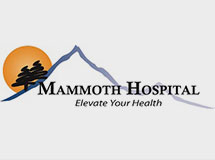Nutrition and Bone Health
Maureen Choman, MS4 and Brian Gilmer, MD
Bone biology
Bone is a component of the musculoskeletal system that provides structure to the body, facilitates mobility, protects internal organs, and produces blood cells and stores minerals. Maintaining good bone health is a dynamic, lifelong process that involves continuous, regular remodeling of bone [1, 2]. Two processes help remodel bone: bone formation, where a collagen matrix mineralized with calcium and phosphorous is created, and bone resorption, a process in which bone is broken down and removed. During times of growth, like in adolescence, formation exceeds resorption to build bone. While later in life, as we age, resorption tends to exceed formation and bone becomes less dense and more porous, a condition known as osteoporosis.
Bone formation during adolescence is related to an individual’s peak bone mass (PBM) - or the maximum amount of bone tissue present when the skeleton reaches maturity. PBM is influenced by both modifiable and non-modifiable factors. Non-modifiable factors include genetics, family history, gender and ethnicity, while modifiable factors include exercise, body weight, hormone status and nutrition [3]. During bone formation, it is essential that the body has the materials needed to build its’ mineralized, collagen matrix and these materials can be obtained from a well-balanced, nutritious diet. Because the bone matrix is primarily mineralized with calcium, both calcium and Vitamin D - a vitamin that aids in calcium absorption - are key nutrients for achieving good bone nutrition. The demand for calcium and Vitamin D and the ability to absorb and utilize these materials changes during an individual’s lifetime.
Bone health and nutrition in the early years
During the first and second decades of life, bone is growing rapidly. It is estimated that 40 to 60% of adult bone mass is formed during the adolescent years. Because of this, adolescence is an essential time for children and their parents to focus on developing healthy eating habits and proper nutrition. The American Academy of Pediatrics (AAP) recommends adequate calcium and vitamin D (see table below) intake and the avoidance of soda in an effort to maximize bone growth and the amount of bone mass acquired during these formative years.
Age-specific recommended daily allowance of calcium and vitamin D
| Age | Calcium (recommended daily allowance in mg/d) | Vitamin D (recommended daily allowance in IU/d) |
|---|---|---|
| 0-6 mo | 200 | 400 |
| 6-12 mo | 260 | 400 |
| 1-3 y | 700 | 600 |
| 4-8 y | 1000 | 600 |
| 9-13 y | 1300 | 600 |
| 14-8 y | 1300 | 600 |
| 19-50 y | 1000 | 600 |
| 51-70 y | 1000 (men) 1200 (women) | 600 |
| 71+ y | 1200 | 800 |
RDA values obtained from the American Academy of Pediatrics and the National Institutes of Health.
Dietary recommendations
Milk and other dairy products like cheese and yogurt are excellent sources of calcium, accounting for ~70-80% of dietary calcium in the United States [3, 4]. It is important to check the labels on milk-alternatives like soy or almond milk, as they may not be calcium fortified or if they are calcium fortified, the type of calcium with which they are fortified may influence the amount of calcium available for absorption [4, 5]. Despite being an excellent source of calcium, milk consumption in adolescents has declined, while soda consumption has increased. Children who consume high amounts of soda have been shown to also consume low amounts of milk [6]. Because of this, and because soda has no known health benefits, the AAP recommends it be avoided.
Vitamin D is another important nutrient in bone health. The major source of Vitamin D is sunlight, while dietary sources include cod liver oil, fatty fish and vitamin D fortified foods. Vitamin D fortified food includes milk primarily, but yogurt, cheese, juice and cereal can also be Vitamin D fortified. You can check the nutrition label to see if a product is Vitamin D fortified.
Bone health and nutrition as we age
It is generally believed that an individual achieves their PBM in their mid-twenties. Once an individual hits this peak value, they steadily lose bone mass over their lifetime. Women initially lose bone mass faster than men, but by the eighth or ninth decade both genders are about equal in bone mass [1]. One’s PBM value and the rate at which PBM declines are associated with one’s risk of developing osteopenia and/or osteoporosis.
Osteoporosis is characterized by decreased bone mass and changes in structure that make bone more fragile and increase fracture risk [7]. Osteopenia is a precursor to osteoporosis. An individual can undergo a bone densitometry assessment, also known as a DEXA scan, to determine if they have either condition and the degree of bone loss. Different medical organizations have various recommendations for who should get a DEXA scan and when, but most organizations agree that women older than 65 should get a DEXA scan. Some organizations recommend post-menopausal women younger than 65, with risk factors or a history of fracture, also get a DEXA scan. Recommendations for men vary, but osteoporosis should not be overlooked in male patients as men also lose bone mass as they age and can be at an increased risk for fracture. You should ask your doctor if you are a good candidate for a DEXA scan.
Dietary recommendations
Regardless of whether or not you have osteoporosis, maintaining good bone health as you age is important and obtaining the recommended amount of calcium and Vitamin D, like it was during adolescence, is still a primary focus. However, it is well established that as we age, our ability to absorb calcium decreases and these absorption deficits are often more pronounced in those with osteoporosis [8]. Because of decreased absorption, the daily recommended amount of calcium and Vitamin D is higher for older adults (see table above)
As mentioned above, dairy products are the primary sources of calcium and Vitamin D. However, many older adults suffer from lactose intolerance and the ability to tolerate dairy products decreases with aging. If you are unable to tolerate dairy products, the National Osteoporosis Foundation recommends other food sources high in calcium and Vitamin D [9]. If you like fish, canned sardines and salmon are good sources of calcium and Vitamin D, while mackerel and tuna are also high in Vitamin D. Green leafy vegetables like collard greens, turnip greens, okra, Chinese cabbage, dandelion greens, mustard greens and broccoli all contain calcium. If your diet is lacking in natural sources of calcium and Vitamin D, you may consider taking supplements to obtain the recommended values. You should ask your doctor if you should begin calcium and Vitamin D supplements.
Other dietary factors to consider in your bone health include beverage consumption - excessive alcohol intake (more than 2-3 drinks/day) can lead to bone loss, while excessive coffee intake (more than 3 cups/day) and soda consumption have been shown to interfere with calcium absorption [9]. Finally, smoking has been associated with an increased risk of fracture. While nutrition is only one component in bone health, it is an important aspect on which to focus and if focused upon early and throughout life, it can have a positive effect on your overall health and well-being.
References
- 1. Jacob RP and Decker M. Bone metabolism and osteoporosis. In: Youmans and Winn Neurological Surgery. 7th ed. Elsevier; 2016: 2315-2321.
- 2. Jahn K and Bonewald LF. Bone cell biology: osteoclasts, osteoblasts and osteocytes. In: Pediatric Bone. 2nd ed. Elsevier; 2012: 1-8.
- 3. Golden NH, Abrams SA, Committee on Nutrition. Optimizing bone health in children and adolescents. Pediatrics. 2014; 134(4): 1229-1243.
- 4. Heaney RP, Dowell MS, Rafferty K, Bierman J. Bioavailability in fortified soy imitation milk, with some observations on method. Am J Clin Nutr. 2000; 71(5): 1166-1169.
- 5. Zhao Y, Martin BR, Weaver CM. Calcium bioavailability of calcium carbonate fortified soymilk is equivalent to cow’s milk in young women. J Nutr. 2005; 135(10): 2379-2382.
- 6. Harnack L, Stang J, Story M. Soft drink consumption among US children and adolescents: nutritional consequences. J Am Diet Assoc. 1999; 99(4): 436-441.
- 7. Prentice A. Diet, nutrition and the prevention of osteoporosis. Public Health Nutr. 2004; 7(1A): 227-243.
- 8. Prentice A. Diet, nutrition and the prevention of osteoporosis. Public Health Nutr. 2004; 7(1A): 227-243.
- 9. Gallagher JC, Lawrence Riggs B, Eisman J, Hamstra A, Arnaud SB and Deluca HF. Intestinal calcium absorption and serum vitamin D metabolites in normal subjects and osteoporotic patients. J Clin Invest. 1979; 64(3): 729-736.
- 10. National Osteoporosis Foundation. Food and your bones - osteoporosis nutrition guidelines. 2019. www.nof.org/patients/treatment/nutrition. Accessed April 20, 2019.





















